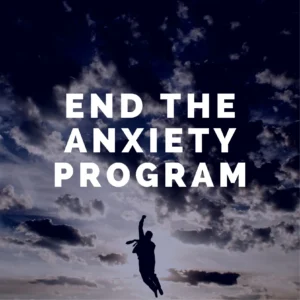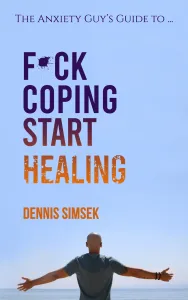Table of Contents

What Symptom Checking Actually Is
If you’re anything like I was (and like a lot of people I work with), symptom checking looks invisible from the outside but loud inside your head. It’s the constant scanning, the tiny habit of zeroing in on every flutter, twinge, or change and trying to figure out whether it means something catastrophic. I don’t say it to shame you, I say it because naming the habit is the first step toward changing it.
How My Brain Learned to Scan (and Why It Felt Protective)
At first, checking felt useful. My brain convinced me it was protecting me. Every time I noticed something and watched it, the thought popped up: “We caught it early.” My brain took credit for the absence of disaster and reinforced the behavior. Over time that reflex, that mental muscle, became automatic. It felt like vigilance, but it was actually a safety ritual.
The Cost of Constant Monitoring on My Life
When you live in scan mode, life happens around you and you’re inside your head. I started missing conversations, jokes, sunsets. My baseline tension stayed high. I couldn’t breathe easily or laugh easily. The worst part: I stopped trusting my body and my instincts. I wasn’t living, I was monitoring.
Losing Spontaneity, Trust, and Presence
Symptom checking doesn’t just make you anxious; it steals your spontaneity. I literally stopped doing things freely because some part of my mind was busy analyzing sensations. The version of me who could relax and be present got buried under hyper-awareness.
How I Began to Unlearn the Habit of Symptom Checking
This was the turning point: I learned that symptoms themselves were not the problem, my fear-based relationship with them was. Unlearning felt slow and steady, but predictable. I watched my baseline tension drop. Sensations became quieter. My brain stopped predicting danger where there was none. Recovery wasn’t about making symptoms vanish; it was about breaking the habit that made them loud.
The Pause Practice to Interrupt Symptom Checking
One practical thing I started doing (and teach in my programs) is deceptively simple, and powerful.
Step-by-step: The Pause, The Phrase, The Redirect
- Pause. The moment a sensation appears, I physically pause. No reacting.
- Place a hand. I put a hand on my chest or stomach. It anchors me.
- Say the line. Out loud or internally: “My body is doing something normal. I’m safe to stay here.”
- Exhale. One long, deliberate exhale.
- Redirect. Move your attention to something external, a sound, a color, a movement.
I say that phrase to myself because it retrains the brain: scanning isn’t how I stay safe. Being present is. Over time, those tiny pauses teach the nervous system that not every sensation requires investigation.
What Recovery Looks Like, It’s Not About Vanishing Symptoms
I used to think healing meant eliminating sensations. I was wrong. Healing meant eliminating the fear-based relationship I had with those sensations. As that fear loosened, symptoms became less loud and less frequent. The real victory was returning to myself, lighter, curious, spontaneous, and present.
If You’re Ready: How to Get Deeper Support
If you’re feeling called to go deeper, there are structured ways to accelerate the shift. My surrender sessions and the Health Anxiety Program walk you through retraining the nervous system and building new default habits. They’re the guided path I wish I’d had earlier, a way to move from vigilance back to trust.
I know how dark the rabbit hole can feel. I also know that change happens one safety moment at a time. If you try the pause practice, give it time and kindness, it works gently, not overnight. You are more than your anxiety, and you have everything inside you to come back to a life grounded in presence instead of fear.
If this post spoke to you, please share it with someone who needs to hear it. If you want the guided route, check out the Health Anxiety Program and my other resources, they were built to help people exactly where you are now.




